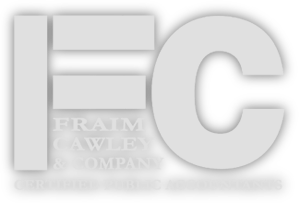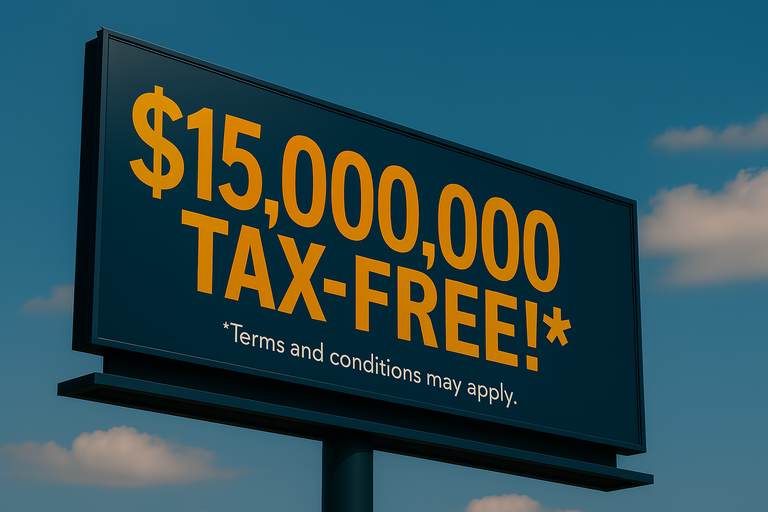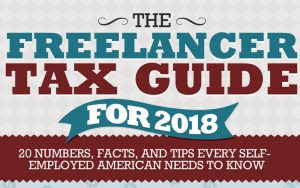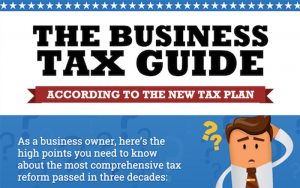Q: Does the $10 million/$15 million QSBS exclusion make a C-Corp the best structure for most small-business owners?
A: Rarely. QSBS can erase capital-gains tax, but only when you: (1) run a domestic C-Corp, (2) meet every §1202 rule for all required years (3) find a buyer willing to do a stock sale, and (4) sell for far more than you distributed over the years. Miss any one and an S-Corp (or hybrid) usually wins. The extra headroom OBBBA added ($15M, CPI‑indexed, for shares issued after 07/04/2025) helps founders who expect an eight‑figure exit – but most owner‑operated businesses will never hit either cap
TL;DR
- QSBS is all-or-nothing. One slip on the §1202 checklist – C-Corp status asset‑cap rule ($50M before 07/04/2025; $75M after, CPI‑indexed), minimum holding period (3/4/5‑year tiers for post‑07/04/2025 shares; five years for older shares), qualified trade – and the exclusion is gone.
- $10M / $15M “myth.” Even though OBBBA bumps the flat cap to $15 million (indexed for inflation) on stock acquired after 07/04/2025, most owner‑operated businesses still sell for well under $10 million, and the 10x basis rule rarely helps because you can’t step‑up basis later.
- Stock-sale required. 70%+ of small-business exits are asset sales; buyers avoid stock to dodge hidden liabilities and get depreciation step-ups.
- C-Corp drag is relentless. Double tax on annual profits often wipes out any back-end QSBS benefit unless you retain earnings and sell quickly at a high multiple.
- Unicorn use-case: high-growth, asset-light company, large exit multiple, stock-sale buyer very likely, and cash retained for reinvestment – not distributions.
- Simpler paths exist. For most owners, an S-Corp or hybrid structure beats C-Corp + QSBS once total tax burden over the life of the entity and realistic sale prices are modeled.
Over the course of this past year we’ve published a series of articles talking about C-Corps. We’ve noted how in most situations they do not work, but provided examples of a few notable exceptions – like hybrid S-Corp/C-Corp strategies or international GILTI structures – where they do.
One of the persistent – and understandable – questions we’ll get asked is “well, what about a QSBS? Wouldn’t that change things?”
It certainly could, so let’s dig into it.
What Is QSBS and Why It Matters
QSBS is short for Qualified Small Business Stock. Under IRC §1202, qualified small businesses may exclude capital gains on the sale of C-Corp stock. The exclusion is the greater of:
- $10 million (for stock acquired before 07/04/2025) or $15 million (for stock acquired after that date, CPI‑indexed).
- 10x the shareholder’s basis in the stock.
That sounds – and can be – huge. $15 million dollars of tax-free money? Who wouldn’t go for that?
What is important to compare here is what is the best tax treatment over the entire life of the business. Even assuming you are able to sell your business and do so via a QSBS, a C-Corp still may not be the most advantageous tax treatment.
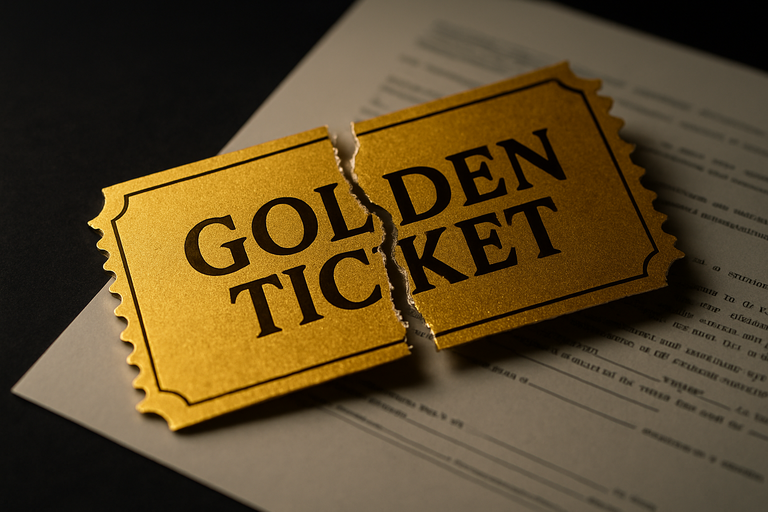
How to Qualify for QSBS Treatment
First, let’s go over some of the requirements for a QSBS. What do you need to do to be eligible?
To qualify for the gain exclusion under IRC §1202, several strict requirements must be met:
- The stock being sold must be from a domestic C-Corporation.
- The investor must be an individual, not a corporation.
- The stock must be acquired directly from the corporation at original issuance, not through a secondary purchase or transfer.
- The corporation’s aggregate gross assets must not exceed $50 million for shares issued before 07/04/2025, or $75 million for shares issued after that date; both limits index for inflation after 2026.
- Holding-period rule:
- Stock issued before 07/04/2025 must be held for at least 5 years.
- Stock issued after 07/04/2025 must be held for at least 3 years for a 50% exclusion, 4 years for a 75% exclusion, or 5 years for a full 100% exclusion.
- The stock must also have been a C-Corporation during that entire time.
- At least 80% of the corporation’s assets are actively used in the operations of one or more qualified trades or businesses.
- The business cannot be in any of the excluded industries listed in §1202(e)(3). These include “health, law, engineering, architecture, accounting, actuarial science, performing arts, consulting, athletics, financial services, brokerage services, or any trade or business where the principal asset of such trade or business is the reputation or skill of 1 or more of its employees”, farming, hotels, restaurants, and mining operations.
- The stock must have been issued after August 10, 1993. For the full 100% exclusion, the stock must have been issued after September 27, 2010.
To qualify, every single requirement listed below must be met. Falling short on even one – even by accident – disqualifies the stock from QSBS treatment.
How the QSBS Gain Exclusion Works: $10M/$15M vs. 10x Basis
Before we get into the math in different scenarios, it’s important to understand some baseline rules on how the QSBS exclusion actually works.

What Actually Counts as Basis?
The 10x basis calculation sounds like a dream, but you are typically limited to what you originally paid for the stock. Section 1202(b)(1) and Section 1202(c)(1) make this very clear (emphasis ours):
“For purposes of subparagraph (B), the adjusted basis of any stock shall be determined without regard to any addition to basis after the date on which such stock was originally issued.”
“Except as otherwise provided in this section, the term “qualified small business stock” means any stock in a C corporation which is originally issued after the date of the enactment of the Revenue Reconciliation Act of 1993, if—
(A) as of the date of issuance, such corporation is a qualified small business, and
(B) except as provided in subsections (f) and (h), such stock is acquired by the taxpayer at its original issue (directly or through an underwriter)”
This immediately nukes a couple of seemingly clever ideas:
- You can’t use profits/accumulate retained earnings to increase your cost basis. Unlike S-Corps and partnerships, C-Corp earnings do not flow through to shareholders, so accumulated profits do not increase your cost basis.
- You cannot buy someone else’s stock at a higher value to increase your cost basis (and thereby the exclusion). QSBS is limited to originally issued stock, not secondary purchases.

Why You Can’t Game the System Later
The next workaround you will sometimes hear is: “Well, can’t I just issue myself more stock then? I have the money now – can’t I buy the stock to raise my basis?”
Yes, you can. There are two important caveats.
First, issuing the new stock resets your holding period. Section 1202(b)(2) defines eligible gain as:
“For purposes of this subsection, the term “eligible gain” means any gain from the sale or exchange of qualified small business stock held for more than 5 years.”
Second, you cannot just contribute cash and park it there for five years. Remember that §1202(e)(1) requires that:
“At least 80 percent (by value) of the assets of such corporation are used by such corporation in the active conduct of 1 or more qualified trades or businesses”
While this is technically a compliant strategy, it’s not a last-minute solution. This is something that would need to be done at least five years before the stock sale.
And there’s real risk associated with the transaction. That additional capital must be deployed and actively used within the business, which means it could be lost during operations.
We note these items specifically because you will find ill-informed advisors trying to pitch them as potential solutions. The first two do not work at all. The third one only works if it is implemented years prior to an anticipated sale, not during sale negotiations.
Even when issuing new stock years in advance, be careful: if not priced properly and supported by business purpose, the IRS may challenge the transaction as lacking economic substance or being a disguised contribution.

Advanced QSBS Strategies for High-Gain Scenarios
If you are in a situation where a greater than $10 million/$15 million gain is a possibility, then you will absolutely want to do extensive tax planning with an experienced tax attorney in conjunction with your CPA. There are a number of other strategies available to increase the gain exclusion. These include:
- The $10 million/$15 million exclusion is a lifetime cap (per taxpayer, per corporation). The 10x basis limit, however, applies to the amount of QSBS stock sold in a single taxable year. If you acquired and held multiple blocks of QSBS – each with their own cost basis – and sold them in separate tax years, you may be able to claim a new 10x exclusion each year.
- The gain exclusion is on a per taxpayer basis. Splitting the ownership among multiple taxpayers increases this exclusion.
- Selling QSBS and using the proceeds to purchase replacement QSBS under Section 1045.
We aren’t going to go into detail on any of these strategies in this article. These can be very complicated and have to be done very carefully to ensure compliance. They’re also very situation-specific, so the exact makeup of the optimal structure is going to vary wildly from taxpayer to taxpayer.
But just as importantly: it just doesn’t affect the majority of taxpayers. One dataset from BizBuySell showed the median sale price of a business being $325,000. Just to be clear – that was the entire sale price, not the gain.

The $15 Million Myth: Most Businesses Don’t Get There
Given all of the factors mentioned above, for the majority of taxpayers operating their own businesses and increasing the value through operations (vs. through purchasing stock in another company), in practice the QSBS gain exclusion is up to $15 million. For many taxpayers it would be less than that, since most businesses do not even sell for $15 million.

Does QSBS Actually Save You Money? Let’s Do the Math
Now that we understand the basics of how the QSBS works, let’s answer the question we noted at the outset: does the QSBS make a C-Corp the most tax-efficient structure for your business?
Let’s run the math. For all of these scenarios, we will assume:
- Single taxpayer.
- No other sources of income.
- Stock sale (for both C-Corp and S-Corp).
- Earnings fully and immediately distributed.
- No wages from the C-Corp, reasonable salary paid from the S-Corp.
Scenario 1: $2M/Year Profit for 5 Years – $10M Sale
For the first scenario, let’s assume that the business generates a taxable income of $2 million per year for five years (before the owner’s salary from the S-Corp). At the very beginning of Year 6, the stock is sold for $10 million.
| $2M/Year Profit – $10M Sale Price | ||
| C-Corp | S-Corp | |
| Annual Income Tax | $420,000 | $589,000 |
| Tax on Distributions | $435,000 | $0 |
| Social Security/Medicare | $0 | $39,000 |
| Total Annual Taxes | $855,000 | $628,000 |
| Years of Operation | 5 | 5 |
| Taxes During Operations | $4,277,000 | $3,142,000 |
| Plus: Stock Sale Capital Gains | $0 | $2,339,000 |
| Total Taxes Paid | $4,277,000 | $5,482,000 |
Those are significant savings – over $1.2 million less than the S-Corp. From the beginning, just as proof of concept we have shown that the QSBS can be a viable strategy.
But this is admittedly a…borderline perfect scenario. The business operates for exactly five years and sells for a 5x multiple. Those are some pretty favorable assumptions. What happens if the business was in operation for 10 years instead?
Scenario 2: Same Profit, 10-Year Hold – $10M Sale
| $2M/Year Profit – $10M Sale Price | ||
| C-Corp | S-Corp | |
| Annual Income Tax | $420,000 | $589,000 |
| Tax on Distributions | $435,000 | $0 |
| Social Security/Medicare | $0 | $39,000 |
| Total Annual Taxes | $855,000 | $628,000 |
| Years of Operation | 10 | 10 |
| Taxes During Operations | $8,554,000 | $6,284,000 |
| Plus: Stock Sale Capital Gains | $0 | $2,339,000 |
| Total Taxes Paid | $8,554,000 | $8,624,000 |
Still viable, but the margins are getting much thinner. But if we add one more year? Or if the business sells for a 4x instead of a 5x? The C-Corp ends up costing you more than it saves.
Scenario 3: Same Profit, 11-Year Hold – $8M Sale
Eleven years of business and a 4x sale price (which would still be a great scenario for the vast majority of small businesses) and the C-Corp ends up costing you over $600,000.
| $2M/Year Profit – $8M Sale Price | ||
| C-Corp | S-Corp | |
| Annual Income Tax | $420,000 | $589,000 |
| Tax on Distributions | $435,000 | $0 |
| Social Security/Medicare | $0 | $39,000 |
| Total Annual Taxes | $855,000 | $628,000 |
| Years of Operation | 11 | 11 |
| Taxes During Operations | $9,409,000 | $6,913,000 |
| Plus: Stock Sale Capital Gains | $0 | $1,863,000 |
| Total Taxes Paid | $9,409,000 | $8,776,000 |
Average Business Sale – $130K Profit, $325K Price (Based on National Data)
Unfortunately, the math on this gets even worse if you run the numbers for what the average business that sells is making. In the dataset we referenced earlier, the average business sold for $325k and at a 2.51x multiple of Sellers Discretionary Earnings (SDE). That would give us operating income of about $130k per year.
What do the numbers look like at that level?
| $130k/Year Profit – $325k Sale Price | ||
| C-Corp | S-Corp | |
| Annual Income Tax | $27,000 | $17,000 |
| Tax on Distributions | $10,000 | $0 |
| Social Security/Medicare | $0 | $9,000 |
| Total Annual Taxes | $38,000 | $27,000 |
| Years of Operation | 10 | 10 |
| Taxes During Operations | $376,000 | $266,000 |
| Plus: Stock Sale Capital Gains | $0 | $44,000 |
| Total Taxes Paid | $376,000 | $310,000 |
That’s not disastrous, but it’s not favorable either. At 5 years the C-Corp costs you $10k more than the S-Corp does and at 10 years it costs $66k more. As we’ve noted in all of our other articles comparing C-Corps and S-Corps: a large portion of the C-Corp “savings” are from not contributing to Social Security and Medicare. When you factor in the loss of that benefit come retirement age, the numbers become even worse.
Key Takeaways from the Math:
- In most realistic scenarios, the S-Corp structure results in lower total taxes.
- QSBS works best when profits are retained and sale multiples are high – which is rare.
- Over long timeframes, the C-Corp tax drag adds up fast.
- Most small business sales aren’t large enough for QSBS to materially shift the outcome.
When QSBS Works: High-Value, Low-Distribution Outliers
We don’t want to make it seem as though we are uniformly against the QSBS structure. We aren’t. As we saw on the first example, they can provide a very real benefit.
If you are in some unicorn of a situation, the savings can be massive. We’ll run two more scenarios just illustrate that.
In the first, we’ll assume $1 million in profit per year for five years but you were somehow able to avoid distributing any profits. The business then sold for $10 million:
| $1M/Year Profit, No Distributions – $10M Sale Price | ||
| C-Corp | S-Corp | |
| Annual Income Tax | $210,000 | $272,000 |
| Tax on Distributions | $0 | $0 |
| Social Security/Medicare | $0 | $31,000 |
| Total Annual Taxes | $210,000 | $302,000 |
| Years of Operation | 5 | 5 |
| Taxes During Operations | $1,050,000 | $1,512,000 |
| Plus: Stock Sale Capital Gains | $0 | $2,339,000 |
| Total Taxes Paid | $1,050,000 | $3,852,000 |
Note: we have discussed this at length in other articles, but you need to be very, very careful that you do not run afoul of Accumulated Earnings Tax (AET) rules if you are not taking distributions. In addition to that, simply leaving the money parked inside the C-Corp isn’t enough. To comply with §1202(e)(1), at least 80% of the corporation’s assets must be used in the active conduct of a qualified trade or business – meaning the capital must continue to be deployed productively.
Or let’s assume you had to distribute all profits, but the business somehow sold for a 10x:
| $1M/Year Profit – $10M Sale Price | ||
| C-Corp | S-Corp | |
| Annual Income Tax | $210,000 | $272,000 |
| Tax on Distributions | $197,000 | $0 |
| Social Security/Medicare | $0 | $31,000 |
| Total Annual Taxes | $407,000 | $302,000 |
| Years of Operation | 5 | 5 |
| Taxes During Operations | $2,037,000 | $1,512,000 |
| Plus: Stock Sale Capital Gains | $0 | $2,339,000 |
| Total Taxes Paid | $2,037,000 | $3,852,000 |
The tax savings in both of those scenarios would be huge, but very clearly those would be very unusual situations. These kinds of outcomes are more plausible in asset-light, high-growth industries – like SaaS, fintech, or other venture-backed startups – where profits can be retained, and buyers may be more open to stock transactions.
On average and in the majority of situations, the math is pretty tough.

The Stock Sale Trap: Why Most Small Business Sales Don’t Qualify for QSBS
There is another area that we have not yet touched on but that is incredibly important. That is: in order to qualify for the QSBS gain exclusion the business must be sold via a stock sale. If it is done as an asset sale, the QSBS gain exclusion does not apply.
Most potential buyers want to do an asset purchase instead. Estimates vary, but some business sale databases estimate that approximately 70% of business sales are done via an asset purchase, not a stock sale.
For some reason this just gets glossed over in these discussions, which is confusing. The entire benefit of the QSBS is predicated on the transaction being structured as a stock sale, which is not how most small businesses are sold.
Why do buyers often insist on an asset purchase?
There are two main reasons:
- Legal liability. With a stock sale, all liabilities (legal and financial) of the business are transferred to the buyer – regardless of whether or not these liabilities are known to the buyer. This can be a significant uncertainty and one most buyers would prefer to avoid. With an asset purchase, they are simply buying the assets of the business without any of the associated legal or financial baggage – including unknown liabilities, pending disputes, or contingent obligations.
- Tax benefits. With an asset purchase, the buyers are able to get a step-up in basis in depreciable assets, allowing them to get the associated tax deduction more quickly. With a stock sale, the seller’s basis transfers to the buyer with no step-up.
- This can be alleviated with a Section 338(h)(10) election, but some buyers will still insist on an asset purchase because they do not want to assume any liabilities. And Section 338(h)(10) elections are not allowed for C-Corps where the shareholders are individuals, so they are of no help for the QSBS issue.
Given that the vast majority of small business sales are done via an asset purchase, you will need to be very confident that you will be able to sell your business via a stock sale before structuring your business under the assumption of one.
And not just reckless confidence or operating on vibes. You need to be confident for a reason. Do the majority of businesses in your industry sell via a stock sale? Do you have an intended buyer for the small business once it reaches scale who is agreeable to a stock sale? Do you have evidence you can 1) sell the business at all and 2) structure the deal as a stock sale?
If not, then the QSBS gain exclusion does not apply and you’re stuck with a C-Corp – with all of the downsides and none of the benefits.

Can You Sell? Should You Sell?
There’s another core assumption that needs to be challenged here. Is your business even going to be able to sell? Because the majority of small businesses cannot.
According to the Exit Planning Institute, 70-80% of small businesses that go to market do not sell.
We don’t want to gloss over that fact. Let’s let that sit for a second.
Only 20-30% of businesses that go to market actually sell. And that’s only including the ones that are actually listed in the first place. Those are the ones the owner thought could be sold. If you factor in the ones that the owner didn’t even bother to list and just closed up shop, the numbers would look even worse.
But even if you could sell, do you want to? Can you afford to? The income from the business needs to be replaced with something. And a 2.5x sale is not going to keep afloat for too long.
It’s another discussion altogether (and a lengthy one at that), but when we go through the exit planning process with most clients we typically do not recommend they sell. Most business owners are much better off decentralizing themselves from the business and turning it into a passive investment rather than selling it.
All of this to say: structuring your business a certain way because of beneficial tax treatment for “when” you sell is another large assumption – especially when it is not backed up by the data. Most businesses will not sell and many business owners cannot afford to sell.
Ask Yourself Before Pursuing QSBS:
- Is there a realistic chance I can sell this business for >$10M/$15M or at a very high multiple?
- Will I be able to find a buyer who’s willing to do a stock sale?
- Do most businesses in my industry sell successfully? Or do they just fade out?
- Am I forming a C-Corp only for QSBS – or do I have other compelling reasons?
If you can’t confidently say “yes” to at least two of these, QSBS probably shouldn’t drive your structure. If you can say yes to two or more – that’s your signal to dig deeper, not charge ahead.
Conclusion: Rare Opportunity, Not a Default Strategy
QSBS can be a powerful tool – in the right circumstances. But those circumstances are much rarer than many advisors and “tax hack” headlines would lead you to believe.
The tax savings in a best-case QSBS scenario can be immense – sometimes eliminating seven figures of capital gains tax. But those best-case scenarios rely on very specific and unusual combinations of factors.
Most small businesses won’t meet those requirements. Most won’t sell at all and of those that do, the majority will sell via asset purchase – instantly disqualifying the QSBS benefit. Even when a stock sale is possible, the ongoing tax costs of a C-Corp often outweigh any potential exclusion on the back end.
So yes, the QSBS can work, but it’s a narrow road and often risky path. If you’re structuring a C-Corp purely to chase the QSBS gain exclusion, you need to be able to clearly demonstrate – with hard data – why your business is one of the rare exceptions. For nearly everyone else, there are simpler, more flexible, and more tax-efficient ways to grow and exit a business.
FAQ
What is QSBS?
Qualified Small Business Stock under IRC §1202 lets you exclude up to $10M ($15M for shares issued after 07/04/2025) – or 10× basis – of capital gain when you sell C-Corp stock held over five years and meeting strict rules.
Why do most small businesses fail QSBS?
They distribute profits (basis is locked), operate in disqualified industries, exceed the $50M/$75M asset cap, or change entity type during the 3-5 year hold.
Can I raise my basis by adding cash or buying existing shares?
No. QSBS basis is locked at original issuance; retained earnings and secondary purchases don’t count (§1202(b)(1), §1202(c)(1)).
Why do buyers prefer asset sales over stock sales?
Asset sales avoid unknown liabilities and give them a step-up in depreciable basis. Without a stock sale, QSBS provides zero benefit to the seller.
When does QSBS actually shine?
Asset-light, high-growth companies (e.g., SaaS) that reinvest profits, attract venture buyers willing to buy stock, and expect an exit well above $10M within 5–7 years.
Any accounting, business, or tax advice contained in this communication, including attachments and enclosures, is not intended as a thorough, in-depth analysis of specific issues, nor a substitute for a formal opinion, nor is it sufficient to avoid tax-related penalties.
